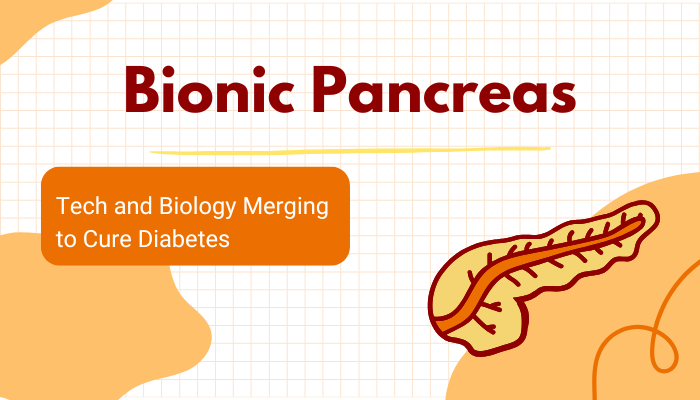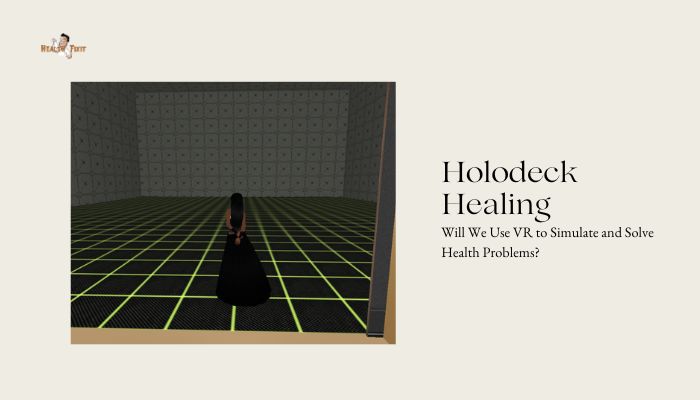Introduction
Diabetes affects millions globally, requiring strict blood sugar management to avoid complications.
Traditional care involves manual insulin injections or pumps, guided by fingerstick glucose checks or continuous glucose monitors (CGMs). Despite these tools, daily life remains burdensome.

Now, cutting-edge systems known as “bionic pancreases” promise a new era of automated, precise diabetes management. By integrating real-time glucose data, software algorithms, and advanced insulin pumps, these devices replicate the key functions of a healthy pancreas.
Patients could see stable blood sugar levels around the clock with minimal oversight.
This article discusses how bionic pancreases work, the core technologies involved, ongoing clinical trials, and the potential impact on both type 1 and type 2 diabetes care.
We’ll also explore future directions, such as dual-hormone systems that deliver both insulin and glucagon, bridging artificial intelligence with biology to ease the daily burdens of this chronic disease.
Why a Bionic Pancreas?
Limitations of Current Therapies
Even with modern insulin pumps and CGMs, patients with type 1 diabetes (T1D) must actively adjust insulin doses. Human error or delayed responses can lead to highs (hyperglycemia) or dangerous lows (hypoglycemia). For many, managing diabetes remains a full-time effort.
Automated Control
The bionic pancreas concept aims to close the loop between glucose sensing and insulin delivery. The system’s software immediately reacts to sensor data, adjusting insulin dosage every few minutes. Patients no longer need to calculate mealtime boluses or worry about overnight hypoglycemia.
Improved Quality of Life
By minimizing manual tasks, the bionic pancreas offers better glycemic stability with less stress. Users can sleep, exercise, or eat with fewer constraints, freeing them to focus on daily life instead of constant diabetes management.
Core Technologies of the Bionic Pancreas
A typical bionic pancreas system comprises:
- Continuous Glucose Monitor (CGM)
- A small sensor worn on the skin measures glucose levels in interstitial fluid.
- Transmits readings wirelessly every few minutes to a controller (smartphone or dedicated device).
- A small sensor worn on the skin measures glucose levels in interstitial fluid.
- Pump-Based Insulin Delivery
- An insulin pump (worn externally) infuses insulin subcutaneously via a small catheter.
- The reservoir, infusion set, and pump design can vary, but all must accurately dose insulin in precise increments.
- An insulin pump (worn externally) infuses insulin subcutaneously via a small catheter.
- Control Algorithm
- A software engine processes CGM data, factoring in user inputs (meals, exercise) as needed.
- It calculates insulin dosage to keep glucose in a target range. Some advanced systems also deliver micro doses of glucagon to prevent lows.
- A software engine processes CGM data, factoring in user inputs (meals, exercise) as needed.
- User Interface
- A smartphone app or specialized handheld device displays glucose trends, insulin dosing data, and allows manual overrides.
- A smartphone app or specialized handheld device displays glucose trends, insulin dosing data, and allows manual overrides.
By continuously looping glucose data to the algorithm, and dosing insulin in real time, the system mirrors pancreatic beta cell function.
Insulin-Only vs. Dual-Hormone Systems
Insulin-Only Closed Loop
Most commercial or near-commercial bionic pancreas systems focus on insulin alone. They use advanced algorithms to reduce hypoglycemia risk by gradually adjusting basal insulin rates and deliver mealtime or correction boluses on autopilot.
- Pros: Simpler design, fewer infusion sites, widely studied insulin formulations.
- Cons: Still some risk of lows, especially with unexpected exercise or meal miscalculations. The system must ease insulin delivery to reduce hypoglycemia rather than actively reversing it.
Dual-Hormone (Insulin + Glucagon)
Some prototypes also infuse small amounts of glucagon, the hormone that raises blood glucose when it drops too low. This approach replicates the full alpha and beta cell interplay of a natural pancreas:
- Pros: Rapid correction of hypoglycemia. Less user intervention when physical activity or meal timing is unpredictable.
- Cons: Glucagon is less stable in pump cartridges, requiring special formulations. Dual infusion sets add complexity and cost.
If stable, pumpable glucagon becomes commercially available, dual-hormone systems may further minimize episodes of hypoglycemia.
Clinical Trials and Early Products
Commercially Approved Hybrid Closed Loops
Several “hybrid closed-loop” devices reached the market:
- Medtronic MiniMed 780G
- Auto-adjusts insulin delivery based on CGM readings, but mealtime boluses still require user input.
- Auto-adjusts insulin delivery based on CGM readings, but mealtime boluses still require user input.
- Tandem Control-IQ
- Works with the Dexcom CGM, automatically adjusting basal rates and delivering correction boluses for mild hyperglycemia.
- Works with the Dexcom CGM, automatically adjusting basal rates and delivering correction boluses for mild hyperglycemia.
These systems represent partial automation, significantly reducing user burden compared to standard pump therapy. Still, they’re not fully “hands-off” solutions.
Beta Bionics iLet
Beta Bionics has developed the iLet bionic pancreas, designed to be either insulin-only or dual hormone. Early trials show improved glycemic outcomes and simpler setup, with minimal user input. The device’s AI-based control aims to reduce meal announcements for type 1 patients.
Ongoing Trials
Clinical studies on next-generation closed loops focus on:
- Full automation with minimal meal announcements.
- More robust exercise detection and glucose prediction.
- Dual-hormone prototypes that show real-time reduction of hypoglycemia.
Regulatory approvals hinge on demonstrating safety, reliability, and tangible improvements in metrics like time-in-range and A1C levels.
Benefits and Limitations
Advantages
- Improved Glycemic Control
- Patients see more time in the ideal 70–180 mg/dL range, reducing both hyper and hypoglycemic episodes.
- Patients see more time in the ideal 70–180 mg/dL range, reducing both hyper and hypoglycemic episodes.
- Less Burden
- Freed from constant carb counting or basal adjustments, users find more flexibility in daily routines.
- Freed from constant carb counting or basal adjustments, users find more flexibility in daily routines.
- Better Sleep
- Automated insulin dosing reduces nighttime hypoglycemia fear, promoting restful sleep.
- Automated insulin dosing reduces nighttime hypoglycemia fear, promoting restful sleep.
- Reduced Long-Term Complications
- Tighter control lowers risk of retinopathy, nephropathy, and neuropathy, possibly cutting healthcare costs.
- Tighter control lowers risk of retinopathy, nephropathy, and neuropathy, possibly cutting healthcare costs.
Challenges
- Sensor Accuracy
- CGM errors can lead to insulin misdosing. Patients must calibrate or confirm readings, especially when large glucose swings occur.
- CGM errors can lead to insulin misdosing. Patients must calibrate or confirm readings, especially when large glucose swings occur.
- Pump and Infusion Site Issues
- Cannula blockages or pump malfunctions can disrupt insulin flow, risking serious hyperglycemia or ketoacidosis.
- Cannula blockages or pump malfunctions can disrupt insulin flow, risking serious hyperglycemia or ketoacidosis.
- Cost and Insurance
- Bionic pancreas systems remain expensive. Insurance coverage is improving but still varies.
- Bionic pancreas systems remain expensive. Insurance coverage is improving but still varies.
- User Learning Curve
- While simpler than manual therapy, users must trust the algorithm and handle system alerts or sensor changes.
- While simpler than manual therapy, users must trust the algorithm and handle system alerts or sensor changes.
- Glucagon Stability (for dual-hormone designs)
- Glucagon easily degrades in solution, requiring novel formulations or daily changes of pump cartridges.
- Glucagon easily degrades in solution, requiring novel formulations or daily changes of pump cartridges.
Future Directions
Fully Closed-Loop Systems
The ultimate goal is a device that requires virtually no user input. It detects meals, exercise, and daily variations automatically, adjusting hormone delivery accordingly. This may involve advanced sensors (activity trackers, continuous ketone monitors) and AI algorithms to predict glucose fluctuations.
Integration with Implants
Long-term CGM implants already exist that last several months without sensor replacement. Insulin pump catheters might be replaced by subcutaneous micro-ports or specialized implants. If a device could embed both monitoring and pumping under the skin, visible external hardware might be minimized.
Multi-Hormone Approaches
Beyond insulin and glucagon, some researchers envision additional hormones like amylin or pramlintide to help regulate postprandial glycemic surges. While more complex, these combinations might further mimic natural pancreatic physiology.
Clinical Impact on Type 2 Diabetes
While bionic pancreas technology primarily targets type 1 diabetes, type 2 patients with advanced insulin dependence could benefit, too. They’d receive consistent glycemic regulation and reduce episodes of hyperglycemia. Still, many type 2 patients produce endogenous insulin, so their needs differ. Future devices may adapt automatically to a user’s baseline insulin production, adjusting exogenous insulin appropriately.
Patient Considerations and Tips
For those interested in bionic pancreas systems:
- Check Eligibility
- Typically for type 1 diabetes or insulin-dependent type 2. Adequate motivation and willingness to manage hardware are important.
- Typically for type 1 diabetes or insulin-dependent type 2. Adequate motivation and willingness to manage hardware are important.
- Sensor and Pump Experience
- Some device knowledge helps. Transitioning from manual insulin therapy might be easier if you’re familiar with CGMs or pumps.
- Some device knowledge helps. Transitioning from manual insulin therapy might be easier if you’re familiar with CGMs or pumps.
- Discuss with Healthcare Team
- Endocrinologists can guide you to the latest systems or clinical trials.
- Endocrinologists can guide you to the latest systems or clinical trials.
- Cost and Insurance
- Explore coverage for CGMs, pumps, and supplies. Some regions have robust reimbursement, while others don’t.
- Explore coverage for CGMs, pumps, and supplies. Some regions have robust reimbursement, while others don’t.
- Ongoing Engagement
- No system is fully set-and-forget. Regular device checks, sensor calibrations, and occasional manual corrections are part of the routine.
- No system is fully set-and-forget. Regular device checks, sensor calibrations, and occasional manual corrections are part of the routine.
Conclusion
A bionic pancreas merges cutting-edge biotechnology with intelligent glucose monitoring, aiming to free people with diabetes from the daily grind of balancing insulin doses.
Early commercial systems show how algorithms can adapt insulin delivery in near real-time, substantially improving glycemic control and patient lifestyles.
Further refinements promise even more automation, potentially including dual hormones, advanced sensors, and integrated implants.
While not yet a complete “cure” for diabetes, bionic pancreases move closer to replicating healthy pancreatic function than ever before.
As these devices mature, they’ll reduce the risk of complications, lighten patient burdens, and transform diabetes care. Ultimately, the synergy of sophisticated software, user-friendly hardware, and robust scientific data paves the way for a future in which living with diabetes needn’t be an endless balancing act—but a largely automated process that mimics natural physiology.
References
- Russell SJ, El-Khatib FH, Sinha M, et al. Outpatient glycemic control with a bionic pancreas in type 1 diabetes. N Engl J Med. 2014;371(4):313–325.
- Thabit H, Leelarathna L, Elleri D, et al. Unsupervised overnight closed loop insulin delivery during free living: results from a multicenter cross-over trial in type 1 diabetes. Lancet. 2015;385(9982):847–853.
- Kovatchev B, Cobelli C, Renard E, et al. Feasibility of outpatient fully integrated closed-loop control. Diabetes Care. 2013;36(7):1851–1858.
- Haidar A, Legault L, Messier V, Mitre TM, Leroux C, Rabasa-Lhoret R. Comparison of dual-hormone artificial pancreas, single-hormone artificial pancreas, and conventional pump therapy for type 1 diabetes management. Diabetes Care. 2015;38(7):1151–1152.
- Ly TT, Roy A, Grosman B, et al. Day and night closed-loop control using the integrated Medtronic hybrid closed-loop system in type 1 diabetes. Pediatrics. 2013;132(6):e1554–e1562.
- Kompala T, Neinstein A. Candid conversation about CGM data: making sense of metrics with patients. J Diabetes Sci Technol. 2021;15(3):625–629.
- Buckingham BA, Cameron F, Calhoun P, et al. Outpatient studies of a hybrid closed-loop system with an insulin-only configuration. Diabetes Care. 2018;41(8):1587–1595.
- Sherr JL, Shah LN, Wysocki T, et al. Teen challenges with diabetes technology: are we ready for advanced artificial pancreas systems? Pediatr Diabetes. 2018;19(4):689–692.
- Schleipman AR, Russell SJ, El-Khatib FH, et al. Combined glucagon and insulin infusion for closed-loop glucose control: a systematic review. Diabetes Technol Ther. 2021;23(6):394–407.
- Brown SA, Kovatchev BP, Raghinaru D, et al. Six-month randomized, multicenter trial of closed-loop control in type 1 diabetes. N Engl J Med. 2019;381(18):1707–1717





